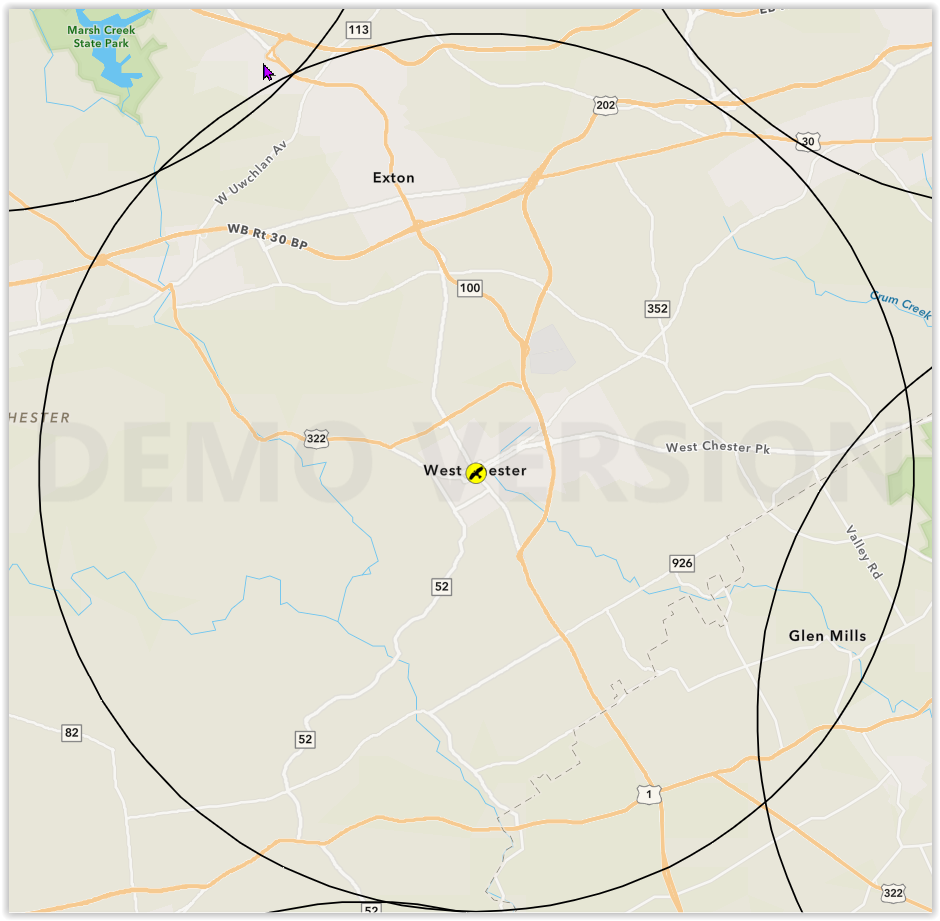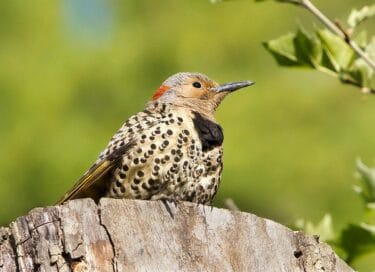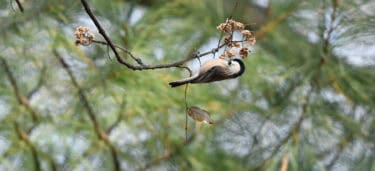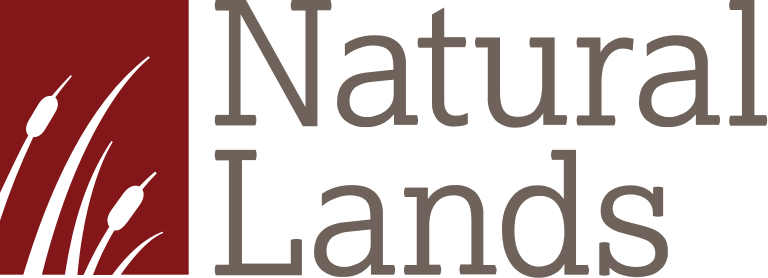Christmas Bird Count at Stroud
by volunteer Kathy Dale
National Audubon’s Christmas Bird Count has been conducted since the year 1900. The program began as an alternative to the Christmas Day “side-hunts” that were common at that time. These side-hunts involved a competition between teams of hunters to bring in the biggest pile of feathered quarry on Christmas day. The early part of the 20th century saw a decrease in many birds including species of herons and the Passenger Pigeon. This decline resulted in the efforts to develop laws to protect birds, including the Migratory Bird Treaty Act which is still in force today. In 1900 Frank Chapman, an early officer in the then-nascent Audubon Society, proposed a new holiday tradition—a “Christmas Bird Census” that would count birds during the holidays rather than hunt them.
Over the years the data collected has been invaluable to determining the population trends of North American wintering species, which has been helpful to federal, state, and local land managers and conservation professionals to develop their management strategies. To date, more than 300 peer-reviewed articles have been produced using the data collected on the Christmas Bird Count (CBC).
Audubon’s Christmas Bird Count now occurs in 20 countries across the western hemisphere from December 14 to January 5 every year. The countries of Central and South America joined in the CBC during the 1970s. (Note that in the southern hemisphere the count period occurs during their summer.)
The West Chester CBC (in which Stroud Preserve is contained) is defined by a 15-mile diameter circle centered on the West Chester Friends meeting house. All CBC locations are defined as a circle. The West Chester Count is sponsored and run by the West Chester Bird Club and has been conducted since 1902.

West Chester CBC
In order to conduct the surveys over the entire circle the West Chester count is organized by two “compilers” that recruit volunteers, collate all of the data, vet all of the observations, and submit the data to National Audubon. The circle compilers, Merle Tanis and Dorothy Bedford, arrange teams of birders into 13 sectors within the circle. Volunteers in each sector survey as much of the area as possible within the one count-day to document all bird species and numbers of birds of each species seen or heard. Stroud Preserve is in Sector 8, and is a very important part of the territory as Natural Lands manages it for wildlife.

female Northern Flicker
Photo by David Korbonits
On December 14, 2024, our intrepid small team of three people covered as much of Stroud Preserve as we could, walking around the marshy areas and along edges of many fields and forest. Some of the species seen at Stroud that day include:
- American Goldfinch
- American Robin
- Black Vulture
- Blue Jay
- Brown Creeper
- Canada Goose
- Carolina Chickadee
- Carolina Wren
- Dark-eyed Junco
- Downy Woodpecker
- Eastern Bluebird
- Golden-crowned Kinglet
- Hermit Thrush
- Northern Cardinal
- Northern Flicker
- Red-bellied Woodpecker
- Red-shouldered Hawk
- Red-tailed Hawk
- Song Sparrow
- Tufted Titmouse
- Turkey Vulture
- White-breasted Nuthatch
- White-throated Sparrow
- Yellow-bellied Sapsucker
One species we typically see at Stroud during the CBC that is iconic is the Hermit Thrush. This is a bird that is found during the winter here but spends its breeding season far north in Canada. It is an unassuming bird, but one that is more likely to be seen at Stroud Preserve and other similar preserves, than in your backyard as it is not a feeder bird. In fact, southern Chester County is the northern edge of its winter range!

Carolina Chickadee
Photo by Joseph A. Cirillo
The edges of the forest and shrubs along the central path at Stroud can be very productive for birds like Eastern Bluebird, Song Sparrow, White-throated Sparrow, Red-Bellied Woodpecker, and Carolina Chickadee among other birds. Other very “birdy” areas at Stroud include the marshy area near the parking lot that fronts Creek Road (along the purple trail) and the marshy area where the red and yellow trails meet in the center of the preserve. But you are likely to see birds anywhere in the preserve as there is such varied habitat.
My husband and I have been birding for the West Chester CBC since 2001 and, before that, multiple counts in the Washington, D.C. area since the 1980s. We enjoy trying to find the birds during this time of year when the trees are bare and it is easier to see them. It is a chance to see some birds that only visit during this colder time of year, like the Hermit Thrush and White-throated Sparrow. This year we were joined by biology student Sophie Nieblum home from college on holiday break. It was helpful to have more eyes and ears to identify all the bird activity!
